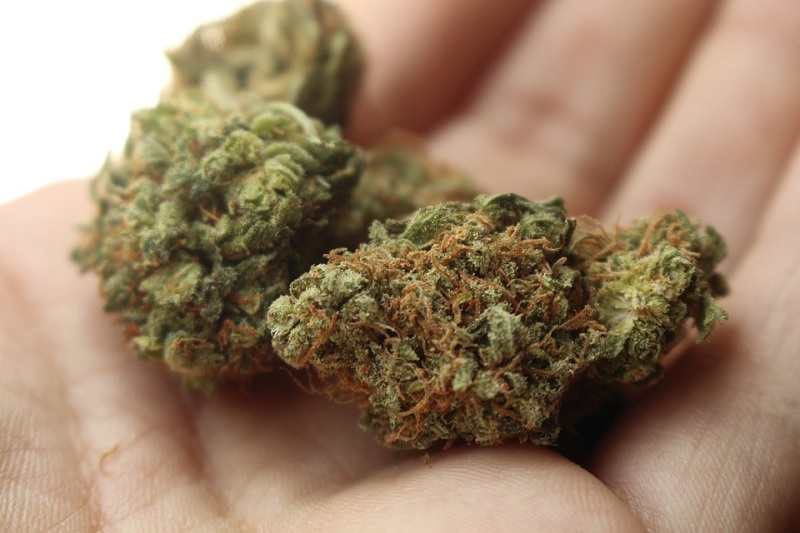The legalization of marijuana use, whether medical and/or recreational, remains one of the highly debated topics all over the world. Interestingly, researchers found that people from 2,500 years ago have started consuming cannabis mainly for its psychoactive components.
Anthropologists and archaeologists from the Chinese Academy of Sciences in Beijing have found physical evidence that could prove that the use of marijuana was present two and a half millennia ago. Even more interesting was their findings that smoking pot in those days was actually part of rituals and religious activities.
The core of the study, published on Science Advances, was the extraction of 10 wooden braziers from eight tombs in the Jirzankal Cemetery within the far-western part of China. The braziers contained stones with burn marks. The materials were analyzed through gas chromatography-mass spectrometry and nine of the burner tools contained traces of marijuana.
Given that traces of marijuana were detected in the wooden burners, it is now believed that it is proof of the earliest practice of smoking or inhaling cannabis. And since several of the same materials were found in tombs within a known burial ground, it is very likely that smoking marijuana used to be a ritualistic practice during funerals.
The type of marijuana found in the tombs of Jirzankal Cemetery contained tetrahydrocannabinol or THC. It is basically the potent psychoactive component in cannabis. Previously, scientists found traces of pot in Jiayi Cemetery dating back to 1,000 years. But it did not have THC leading them to believe that marijuana, in this case, could have only been used for other purposes like clothes.
This then proves that marijuana was used in Jirzankal Cemetery 2,500 years ago likely mainly for its psychoactive effects. “It’s a wonderful example of how closely intertwined humans are and have been with the biotic world around them, and that they impose evolutionary pressures on the plants around them,” co-author Robert Spengler from the Max Planck Institute for the Science of Human History in Jena, Germany told National Georgraphic.



 Orbital resonance − the striking gravitational dance done by planets with aligning orbits
Orbital resonance − the striking gravitational dance done by planets with aligning orbits  Why is the universe ripping itself apart? A new study of exploding stars shows dark energy may be more complicated than we thought
Why is the universe ripping itself apart? A new study of exploding stars shows dark energy may be more complicated than we thought  What is minoxidil, the anti-balding hair growth treatment? Here’s what the science says
What is minoxidil, the anti-balding hair growth treatment? Here’s what the science says  Genetic diseases: How scientists are working to make DNA repair (almost) a piece of cake
Genetic diseases: How scientists are working to make DNA repair (almost) a piece of cake  The rising flood of space junk is a risk to us on Earth – and governments are on the hook
The rising flood of space junk is a risk to us on Earth – and governments are on the hook  The mystery of consciousness shows there may be a limit to what science alone can achieve
The mystery of consciousness shows there may be a limit to what science alone can achieve  Could a telescope ever see the beginning of time? An astronomer explains
Could a telescope ever see the beginning of time? An astronomer explains  Why now is the time to address humanity’s impact on the moon
Why now is the time to address humanity’s impact on the moon  Tatahouine: 'Star Wars meteorite' sheds light on the early Solar System
Tatahouine: 'Star Wars meteorite' sheds light on the early Solar System  If life exists on Jupiter’s moon Europa, scientists might soon be able to detect it
If life exists on Jupiter’s moon Europa, scientists might soon be able to detect it  Black hole, neutron star or something new? We discovered an object that defies explanation
Black hole, neutron star or something new? We discovered an object that defies explanation  Alpha, beta, theta: what are brain states and brain waves? And can we control them?
Alpha, beta, theta: what are brain states and brain waves? And can we control them?  Archeoastronomy uses the rare times and places of previous total solar eclipses to help us measure history
Archeoastronomy uses the rare times and places of previous total solar eclipses to help us measure history  The brain is the most complicated object in the universe. This is the story of scientists’ quest to decode it – and read people’s minds
The brain is the most complicated object in the universe. This is the story of scientists’ quest to decode it – and read people’s minds 






























